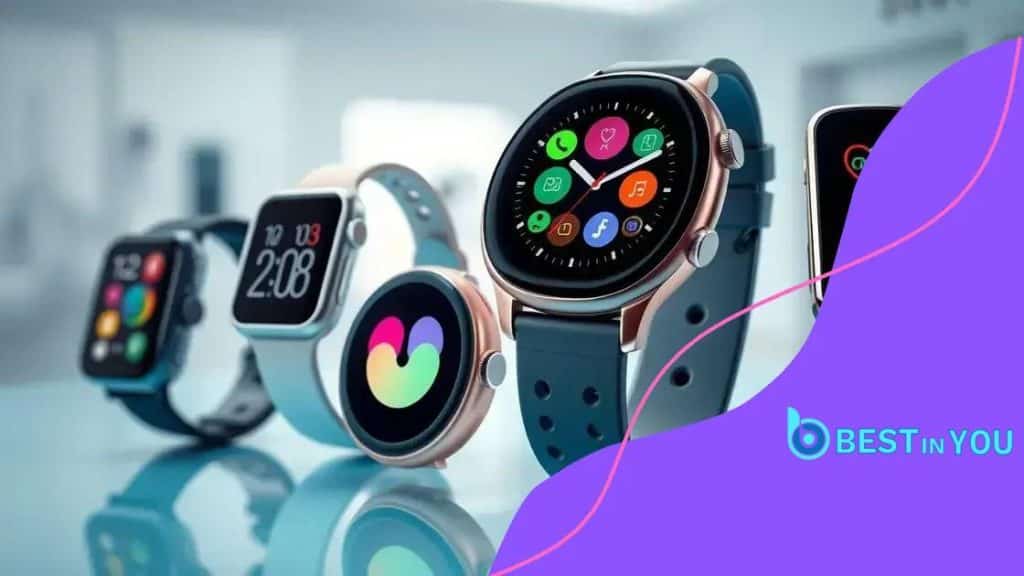How wearable devices are influencing public health policies

Advertisements
Wearable devices are reshaping public health policies by providing real-time health data, enabling proactive health management, and informing targeted interventions for better community health outcomes.
How wearable devices are influencing public health policies is an intriguing topic that reflects the intersection of technology and healthcare. Have you ever considered how your fitness tracker could be shaping health legislation? This discussion reveals the transformative potential of these tools.
Anúncios
Understanding wearable devices and their functions
Understanding wearable devices and their functions is essential in today’s health-focused world. These devices are not just gadgets; they serve numerous purposes that contribute to personal health management.
Types of Wearable Devices
There are various types of wearable devices, each designed with particular functions.
- Fitness trackers: These devices monitor daily activities, including steps taken and calories burned.
- Smartwatches: Beyond fitness tracking, they provide notifications, health monitoring, and even apps for various uses.
- Health monitors: These are specifically designed to track health metrics, such as heart rate and sleep quality.
- Medical wearables: Devices used for specific medical purposes, such as managing diabetes or monitoring cardiovascular health.
As the technology progresses, the capabilities of these devices grow. Wearables can now track vital health metrics in real time. For instance, many devices can alert users if their heart rate goes above or below a set threshold. This feature not only aids personal health monitoring but also helps healthcare professionals in making informed decisions.
Anúncios
Data collected from wearable devices can be incredibly useful for health research. For example, anonymity preserved data can provide significant insights into overall public health trends. This information serves as a crucial basis for public health policies, leading to improved health outcomes at a community level.
Functions of Wearable Devices
The functions of these devices extend beyond mere activity tracking. They can also:
- Provide reminders: Users receive notifications to stay active, take medications, or follow wellness routines.
- Encourage healthy habits: Gamification features in many wearables promote better lifestyle choices.
- Connect to healthcare systems: Some wearables can share data with healthcare providers, ensuring better patient monitoring.
Ultimately, understanding how wearable devices function empowers users to utilize them to their fullest potential. As adoption increases, the landscape of health management continues to evolve, showing a promising future where technology and health unite.
The impact of wearable health data on public health
The impact of wearable health data on public health is significant and evolving. As more individuals use these devices, the amount of health-related data collected has increased tremendously. This data offers insights into health behaviors and trends within populations.
Data Collection and Usage
When individuals use wearable devices, they generate valuable health data. This data can be used for various purposes:
- Tracking epidemiological trends: Public health officials can analyze aggregated data to identify patterns in health behaviors.
- Enhancing preventive measures: Understanding common health issues helps in designing targeted health campaigns.
- Personalizing healthcare: Data from wearables can inform doctors about patient habits and health status.
These applications show how utilizing wearable health data can improve healthcare outcomes. Real-time monitoring provides immediate feedback, which can lead to better decision-making for individuals and healthcare providers alike. Individuals can manage their health proactively by understanding their activity levels, sleep patterns, and more.
Challenges and Considerations
Despite the benefits, there are challenges associated with the collection and use of wearable health data. Privacy concerns arise as sensitive information is gathered and shared. Wearing a device does not guarantee data security, which can lead to breaches. It is crucial for users to be aware of how their data is being used.
Moreover, the accuracy of the data from wearable devices can vary. Not all devices provide the same quality or level of data, leading to potential misunderstandings of individual health statuses. As such, it is vital for both users and health professionals to approach the data with a critical eye.
In summary, the integration of wearable health data into public health strategies holds the potential to drive positive change. Continued education about its use, limitations, and privacy concerns can help maximize the benefits of these devices.
Challenges faced in integrating wearable technology

Challenges faced in integrating wearable technology into healthcare and public health systems are multifaceted. As these devices become more popular, understanding the obstacles is crucial for successful implementation.
Data Privacy and Security
One of the primary concerns is data privacy. Users often worry about how their health data is stored and shared. With so much sensitive information being collected, ensuring that it remains secure is a top priority.
- Potential data breaches: Hackers can target health data, putting users at risk.
- Lack of user control: Many people are unsure about what data is collected and who has access to it.
- Regulatory compliance: Companies must comply with regulations to protect personal health information.
Addressing these issues is critical for building trust among users and encouraging more widespread use of wearables.
Device Compatibility and Interoperability
Another challenge is the lack of compatibility among different devices. Not all wearables can share data seamlessly across platforms, which hinders their overall effectiveness. Users often find themselves frustrated when their devices do not work well together.
This lack of interoperability can create barriers for healthcare providers trying to consolidate patient data into cohesive records. Integrating disparate data sources can lead to incomplete patient profiles, making it difficult for providers to make informed decisions.
Additionally, varying technological standards can complicate the development of new wearable devices. Developers must navigate different operating systems, software platforms, and communication protocols to ensure their products function well within a larger ecosystem.
User Engagement and Adoption
User engagement is also a significant challenge. While many people are enthusiastic about using wearables, continuous engagement remains an issue. Users may stop using their devices due to various reasons:
- Complexity of use: Some devices may have complicated interfaces that discourage new users.
- Lack of perceived value: Users may not see enough benefit to keep using their devices.
- Battery life and maintenance: Many wearables require regular charging and upkeep, which can be inconvenient.
Encouraging ongoing use is vital for maximizing the potential benefits of these technologies. Manufacturers must focus on designing intuitive devices that provide clear advantages to users.
Case studies of wearable devices in health policies
Case studies of wearable devices in health policies provide valuable insights into their effectiveness and implementation challenges. These real-world examples illustrate how wearable technology can shape health initiatives and outcomes.
Case Study 1: Heart Monitoring Initiatives
In several urban areas, health authorities integrated wearable heart monitors into their public health strategy. These devices track patients’ heart rates and rhythms, sending the data directly to healthcare providers. This program allows doctors to monitor patients remotely and intervene early if problems arise.
- Impact: The initiative reduced emergency room visits by up to 30% for participants.
- Engagement: Patients felt more empowered to manage their health.
- Long-term results: Studies showed improved heart health outcomes across the population.
By analyzing the data from these devices, health officials adapted their educational campaigns, emphasizing heart health awareness in at-risk communities.
Case Study 2: Diabetes Management Programs
Another prominent example comes from a diabetes management program that uses continuous glucose monitors (CGMs) as part of a wearable device strategy. Patients receive real-time glucose readings, helping them make informed decisions about their diet and activity levels.
The data collected not only aids individuals in managing their condition but also provides aggregated insights for public health agencies to tailor diabetes prevention programs. As a result, communities have seen:
- Reduced hospitalization rates: With better glucose control, fewer complications arise.
- Enhanced educational resources: Programs developed based on user data focused on high-risk population needs.
- Community support: Peer support groups helped motivate patients to utilize their CGMs effectively.
These initiatives have demonstrated the potential of wearable devices in improving population health outcomes while reinforcing the importance of community engagement in health policies.
Case Study 3: Fitness Tracking and Public Health Campaigns
Some governments have aimed to increase public health awareness by promoting fitness trackers among citizens. These programs often include challenges and incentives to encourage physical activity.
For example, a city-wide initiative offered discounts for local gyms to participants who logged a certain number of steps daily. This approach resulted in:
- Increased physical activity: Participants reported higher levels of daily exercise.
- Healthier communities: Local health statistics showed improvements in obesity rates.
- Community connections: Participants formed social networks, enhancing social support for healthy lifestyle changes.
Through these case studies, healthcare leaders are able to see the real-world impact that wearable technology can have on health policies and community health management.
Future trends of wearables in public health
Future trends of wearables in public health show a promising direction for enhancing healthcare delivery and health monitoring. As technology advances, wearables continue to evolve, offering new functionalities and insights.
Integration with Artificial Intelligence
One major trend is the integration of artificial intelligence (AI) into wearable devices. This technology allows wearables to analyze health data in real time, providing users with personalized feedback. For example, an AI-powered fitness tracker can give tailored workout suggestions based on a user’s activity level and overall health metrics.
- Predictive analytics: AI can identify potential health issues before they become serious.
- Customized health plans: Users can receive individualized recommendations for diet and fitness.
- Enhanced user experience: Improved interfaces that are easier to use and understand.
This combination of AI and wearables helps users take control of their health and make informed decisions.
Data-Driven Public Health Policies
As more individuals adopt wearables, the data collected will drive future public health policies. Health agencies can access real-time data that reflects community health trends. This data enables authorities to implement more effective health campaigns and allocate resources where they are needed most.
For instance, if a community shows rising levels of sedentary behavior, public health officials can develop initiatives to encourage physical activity. By analyzing aggregated data, officials can address health concerns proactively.
Wearable devices will also play a crucial role in monitoring outbreaks and responding to public health emergencies. The continuous flow of data allows health agencies to track health trends and implement timely interventions.
Enhanced Interconnectivity
The future of wearables also lies in enhanced interconnectivity. Devices will increasingly communicate with each other and with healthcare systems. This will create a more cohesive ecosystem where health data can flow seamlessly between wearables, smartphones, and healthcare providers.
- Interoperable devices: Devices that can share health data across different platforms.
- Smart home integration: Wearables that communicate with smart home devices for a comprehensive health monitoring system.
- Improved health records: More accurate and up-to-date patient information for healthcare providers.
Such integration can streamline health monitoring and allow for better-informed medical decisions, fostering collaboration between patients and providers.
In summary, the future trends of wearables in public health indicate significant advancements that will enhance individual health management and public health initiatives. As technology progresses, these devices will become even more integral to modern healthcare.
wearable devices into public health policies is shaping the future of healthcare. These devices not only provide invaluable health data but also empower individuals to manage their health better. As technology advances, the continuous evolution of wearables will drive innovations in public health strategies, making healthcare more accessible and personalized. This evolution presents exciting opportunities for enhancing community health, improving disease prevention, and fostering greater engagement between individuals and healthcare providers.
FAQ – Frequently Asked Questions about Wearable Devices and Public Health
How do wearable devices impact public health policies?
Wearable devices provide valuable health data that can inform and shape effective public health policies, improving overall community health outcomes.
What are some benefits of using wearable technology for individuals?
Wearable technology empowers individuals to monitor their health in real time, encourages proactive health management, and helps in making informed lifestyle choices.
How can data from wearables help in addressing public health issues?
Data collected from wearables can be analyzed to identify health trends and issues within communities, allowing health authorities to implement targeted interventions.
What challenges do healthcare providers face when integrating wearables?
Healthcare providers encounter challenges such as data privacy concerns, device compatibility, and ensuring continuous engagement from users.





